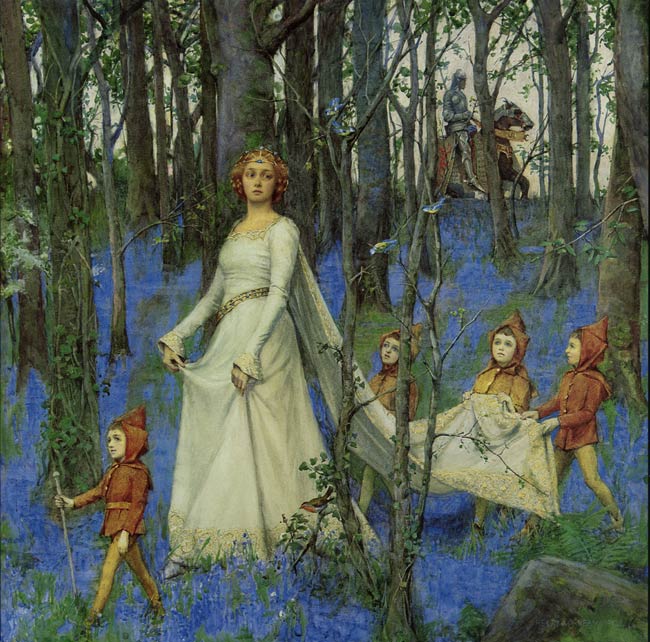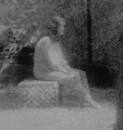 It was National Cheesecake Day, but that wasn't why I purchased a slice of strawberry cheesecake at Incredibly Delicious. Originally I just thought it was the simple power of suggestion, since the person ahead of me ordered a slice, and the pale pink of the cheesecake, under a white, frothy, layer did look appealing. Of course, all desserts at Incredibly Delicious are a excellent bet at being very good. So I bought a slice to go with my lunch. And I will admit that somewhere in the back of my mind I did think this a touch odd. While I have nothing against cheesecake it has never been my first choice for dessert. Normally, if I get dessert it will be a fresh fruit tart, or a chocolate, and cherry, cookie. Yet, even as I ate a tasty lunch that slice of strawberry cheese cake beckoned. The first bite (and all later ones) were perfection - chilled strawberry melting quickly on the tongue, with the graham cracker crust the finale of the taste, and as I ate I remembered a Sara Lee chilled pie that my family loved. I think it was for one year, or more, that my mother made sure to buy a couple - one for that week, and one to keep frozen. While I will grant it was made with lesser ingredients than Incredibly Delicious's cake, my family and I didn't care at that time. For one - the bistro hadn't yet been dreamed of. All we knew was that the chilled strawberry cheesecake melted swiftly on the tongue, and the graham cracker crust was the perfect finale. As to why we stopped buying them, I don't remember, though maybe Sara Lee stopped making the cake, or we found a new favorite. None of which matters. It is the ghost of that flavor that does, particularly for a storyteller (be they performer or writer). Amongst those who study story it has been known for a long time that when you tell a story, and invoke the senses, that the story you know, born of your memories, is a different story than what your audience hears as your words awaken personal memories. However, I have never had such a simple, but powerful, experience that so proved the point with me. What process brought me to eat that slice of strawberry cheesecake? I would have to say that it was first having my attention called to the presence of strawberry cheesecake, and when I was mindful of it, then the pale pink of the filling lightly stirred the ghost of a memory. Yet not so much that I was aware how it was impacting my decision. And the fact that the slice of cake kept calling my attention back during lunch hadn't yet awakened the full memory. Finally the texture and taste revealed the memory that was stirring - a memory of a simple, family, thing, so long forgotten, but suddenly, achingly, important. What does this say for the memories invoked by storytelling? Do they stir in our audiences' minds, teasing, but not yet fully realized until a later trigger finishes the awakening? Or do they simply haunt the edges of memory?
0 Comments
I love wandering through bookstores, and anymore it is one of my forms of relaxation. So, while I don't have children, I am perfectly happy to wander the whole of Barnes & Noble, including the children's section. Of late I have been intrigued by how folk and fairy tales, and myths, have been forming the base of children's and young adult novels, and that is not counting adult books too. And, of course, there are now a whole plethora of movies. Though, I often wonder how the sheer amount of re-workings may dilute the culture's knowledge of the stories behind the books and movies.
One of the other reasons for my exploration in the children's section is that occasionally they put collections of folk tales, and fairy tales, there. And I have had some luck in my finds. This time, as I was looking through the section, I was pleased to see that the store had stocked up on young adult collections of Greek, Norse, and Egyptian myths. Hopefully this means that young readers want to learn more about the sources of their favorite series. In many ways that is the wonder of young minds - they are inquisitive. And if something catches their interest then they want to know more! I can vaguely remember those days, which is what stimulated my interest in folklore. I remember the power and eeriness of Christina Rossetti's "The Goblin Market," and I had access to a sampling of Irish folk tales, with their hints of the Fair Folk. From these my quest was launched, and led me to becoming a storyteller. At least I am hoping the presence of those young adult collections of myths indicate inquisitive interest in the original stories. Though, truth be told, I suspect that the younger audience stands a greater chance of knowing those myths than adults. For many adults who watch the fairy tale based T. V. shows and movies, or read the romances and fantasy novels derived from both folk and fairy tales, there is often little realization that the roots are old. That the roots go beyond Disney, or modern scriptwriters. That folk tales are often derived from folk beliefs, that myths are from ancient religions, and even the fairy tales are woven from our cultural history. "Does it matter?" I know a few who have asked that question. On the surface, does it really matter that a young woman thought that Shakespeare wrote for television? And that some first graders were terrified of leprechauns because of a horror film? Granted it might make a few shake their heads. But really - was that young woman's misconception going to change how well she made a living? Or did it matter that little ones were afraid of a make-believe character (even if they probably shouldn't be watching horror films that young)? Maybe not in the run of every day life. Yet when stories, or anything else, lose their roots they weaken. Are really lost. Way too many people, during the hectic days of early adulthood, have no use for the old. Be it family stories, history, or myth. Yet, as they mature some part of them yearns for those roots - and far too often the roots have withered to a shadow of what they were. Maybe it has always been that way - that I don't know. So I will accept those glimmers of hope that there are inquisitive minds out there that will nourish the roots for years to come. It has been a fine month for telling holiday tales. First there was Downtown Springfield's Holiday Walks. The weather has just turned frigid and I was more than delighted to be comfortable and warm in the Herndon Law Office. I had hopes of venturing out and seeing the live reindeer, but wimped out. Of course, I did have Sebastian, the Christmas Moose (puppet) with me. (The quest for the reindeer did, however, lead me to start writing about Sebastian, which will be shared with - or inflicted on - my readers over the Twelve Days of Christmas.)
A Clayville Christmas was my next venue. The weather was clear, and so there was a steady stream of visitors through the Broadwell Inn. So now we have passed the Winter Solstice, and soon Christmas will be upon us. Tomorrow night I will get the tree up, and turned on the lights. And on Christmas I will light a bayberry candle, to be burnt between Christmas and New Year for health and prosperity to the house. As to how I will be celebrating the Twelve Days of Christmas I will be finding holiday facts and tales to share. Some may even be hidden in Sebastian's story. I also invite you to make use of my Christmas bibliography too - for some festive reading. How often do we talk about the power of stories? Or about having faith? And how often do we act on either - as in a leap of trust? In reading Signe Pike's Faery Tale I came across a woman who had followed the power of stories - and leapt into her own as she went off to search for the Fair Folk.
I had picked up the hard cover a while back, and had added it to my library of faery lore. And I will admit that even as I purchased the book I was a little dubious, since many of the modern books on the fairies tend to be very light on actual lore, and heavy on fluff. Couple that with it being a memoir and I was really wondering if I had spent my money well. It turned out I had. It took me a while to get around to the book as other research projects demanded my attention, but now I am sorry I have finished it. This was more than just a book of fairy lore. Ms. Pike's ability to bring places and people to life on the page is powerful in its own right. And the landscapes of her travels through the British Isles stand out in your mind. She had studied her lore and history, and she blends that with her personal growth and healing through the book. At the end you know she is strong in her beliefs, but she doesn't try to come up with any hard conclusions. Not that that would be possible when it comes to the Fair Folk. What is solid is the belief that both nature and history should be respected, and permission asked when a traveler enters these realms. A few weeks back I had the pleasure to perform at the Sangamon County Historical Society's "Spooky Sangamon." The other two presenters were: Ms. Tara McAndrew McClellan, and Mr Garrett Moffett. Ms. McClellann did a presentation about how Springfield, Il residents reacted to the infamous “War of the Worlds” radio broadcast. And Mr. Garrett Moffett spoke on the possible hauntings of the Lincolns’ Home, and on Lincoln's psychic experiences.
My own presentation was of two traditional ghost stories. As I explained to the attendees, finding folkloric ghost stories in Sangamon County - or even in Central Illinois - were as hard to find as the ghosts themselves. So the criteria for my choices were stories that could be found up to the eastern border of Illinois, and on the western border. One of the stories concerned a murdered peddler (I suspect there are more peddlers' ghosts than there were murdered peddlers). And the other had to do with a ghost who had died with things undone. Both of these types of tales are fairly classic folkloric ghost stories. One of the things that I have noticed in some modern collections of hauntings is that there is a certain disdain of folkloric ghost stories. In some books there is a sense that they aren't "valid," since the reason behind the stories has been lost in time. And they don't register on electronic equipment. I liked a comment I read in one book. A book that took a more balanced view. I can't remember the book's title, but the gist of the quote was that, “folkloric ghost stories are cultural artifacts, which reflect the mores and fears of a particular time.” The two stories I told that evening fit that criteria. Ghosts of murdered peddlers are represented in stories in just about every state, and some states have more than one. Historical peddlers and traveling salesmen had to be wary. They were often out of touch with family for long periods of time, and they often carried large sums of money, or goods. Ghosts with unresolved issues are also incredibly common. Murder victims whose bodies were hidden often returned as ghosts. And if money was not revealed before death this offered another cause. Of course, hidden treasures are still a popular fantasy. Now how can such common ghost stories be "valid?" It does come back to reflecting the concerns of a culture. I recently read a history book, entitled, The Bewitching of America, by Dr. Owen Davies, which is about American witch belief after the Salem witch trials. What was fascinating is that he was able to find, often via newspapers, an incredible number of actual witch accusations throughout the U. S.; many occurring in the 20th century. This belief was paralleled in the continued spread of folkloric witch belief, which continued to be renewed with new immigrant populations. Dr. Davies does an excellent overview of the history of the various incarnations of witchcraft in America, and ends with how the view of witches has changed. Ghosts and witches beliefs have always been lumped together when it comes to the devoted rationalist, and in the 19th century most wanted to claim that such superstitions were on the wan. I suspect this is why there is little documented in the Midwest – because of a belief that if these “superstitions” were ignored they would wither away. However, Dr. Davies, proved, at least for witches, that neither belief, nor the folklore, had really gone away. So I would argue, when it comes to ghosts, that a tale isn’t “just folklore” to be proved, or disproved, by modern ghost hunting. For me the tale itself is a valid cultural artifact, and should also be preserved. Random Strands of History - A Veterans Day Recognition: Being Woven Into the Tapestry of History11/6/2013 This week has been blessed with an offering of fascinating, moving speakers. All of whom reminded the listeners of the gifts and sacrifices these individuals had given a nation.
Monday evening the Elijah Iles House Volunteer Appreciation Dinner wrapped up with a performance by Ms. Kathryn Harris as Harriet Tubman. Ms. Harris was enthralling, and educational, as she gave a overview of Harriet Tubman's life. I had known that Mrs. Tubman was a remarkable woman, but I had not realized to what extent. It was hard to conceive of several 3 months to 6 month journeys, mostly on foot, as she led her "passengers" from Maryland to either Pennsylvania or Canada. Or that she was the only woman to lead a Union ambush, and free several hundred slaves. Or that she went on to work for the Federal government, and later ran a "old folks home" - all without the ability to read or write. And that she lived till her 90's. Then, last night, I attended the Sangamon County Historical Society's (SCHS) Pre-Veteran Day Salute, which was held out at U of I - Springfield's Brooken Auditorium. I came in a little late, but was able to hear most of Mr. Mark DePue, Director of the Oral History program at the Abraham Lincoln Presidential Library, interview of Mr. Kenneth "Tuck" Belton (WWII veteran), and all of Mr. Bernie Goulet's (Korean War) interview. As I listened to these two men it was obvious that the experiences in these two wars had not dimmed in their memories. For the listeners it was like hearing of a dire movie come to life - hard to imagine anyone living through such circumstances. How could you not be moved as you listened to these two men? Such as when Mr. Belton, who fought with the Resistance in Holland, recounted having to stand by and watch 10 Dutch men being gunned down on the street. The only thing keeping him from reacting was the touch of a young woman's hand - warning him to hold back. To imagine what it would be like to have to portray a deaf/mute, and refrain from any response when the enemy tested you with a loud sound. Or when he told how he had to hide in a patch of woods in January. He said that a furry dog came by - that he wished that dog could be with him now - as the dog saved his life. He bundled the dog into his coat, and the two slept beneath those trees, in the snow, that night. It would have to been a hard heart not to feel the grief as Mr. Goulet told of the company cooks crying when they realized their men would not come back. Or when the officer who was Mr. Goulet's mentor, was gunned down only a few feet ahead of him. Later there was a little reception, and I took the opportunity to thank Mr. Belton for his service. I wish I could have spoken with Mr. Goulet too, but he was busy. And it was hard not to cry - not just at their stories - but at the fact I knew that these men were soon to be woven into the tapestry of history. Bright threads that is true, but soon all we would have is their stories. Once there was a man who had three sons - the youngest being called, Jack, who was considered too weakly to do much. As the farm was poor the eldest went off to a hiring fair. There he met a man who offered him a hundred gold for a year's work, but with one small provision. Whoever complained first would have a strip of hide taken from his back, and would owe a hundred gold. Now the eldest son was good tempered, and could see no danger in the offer, and so....
After being over-worked, starved, and abused the first son, and then the second, came home badly wounded, and with no pay. Then Jack set off for the hiring fair..... Of course, being Jack, he not only got the gold for himself and his brothers, but left the farmer and his wife wishing they had never met him. Sprinkled throughout folklore are stories like this, and even more dire warnings from ghost stories. The hiring fair was practiced in many places in earlier times, and existed here in the United States. Young men and women knew that it was a necessary gamble that they put their lives into the hands of unknown employers. And that it also often meant going off to unfamiliar, distant, places; with little, to sometimes no, opportunity to communicate with family. Now the current job market isn't quite so dangerous. Quite. Yet there are pitfalls for the unwary. And scavengers. (I won't insult the animal kingdom by making comparisons). What has started me on this was an experience I recently had. One that reminded me of why I loathed the online job sites, and searches, particularly because they offer the scavengers a plentiful hunting ground. Last week I received a call from an insurance company recruiter, and as normal I was about to say, "Thanks, but no thanks. Insurance sales is simply not something I ever wished to pursue.” (Here I should say that I have nothing against insurance companies, or insurance representatives. I know many fine individuals in the field, and know they have become successful via fairness and diligence. Nor do I believe that all insurance companies use similar recruiting strategies.) However this particular recruiter reassured me that this wasn't about sales. Yes, they were hiring sales agents, but her manager had saved back a few resumes, mine included, to interview for training positions. Now that was something I would be interested in. Granted I love what I am doing - being a storyteller, and also being a social media specialist, but if the right full-time (or part-time) job came along I know it would be wise to consider it. My own businesses, fortunately, are such that I can set my own hours. So we set up a interview, and I was reminded to "bring my resume and dress professionally." I assumed they have many who don't remember such necessities. So last Friday I arrived at the office - and was met by a young woman in two, overlayed, tee shirts and cut off jeans. She introduced herself as the general manager. To make a short story even shorter it turned out that it had been a bait and switch - all they were hiring for was sales. "And would have a group interview next week." Yes, I was annoyed, but mainly at the breadth of this type of activity. The internet does provide opportunity for getting hired - as did the hiring fairs of old, but it also has as many traps. And time wasters. I consider myself lucky to have skills from which to build my own business, but before I made the decision to create White Fox Social Media I was amongst the dedicated job hunters (after having been downsized). During the many long hours of searching for a position I noted how the online job search engines perpetrated useless information. The one that still stands out in my mind is the "movie casting company" in Auburn, Ill. Now Auburn is a lovely little town, but the movie capitol of the world its not. And out of curiosity I did a some research - it turned out that this was a scam that originated in Russia. Not a surprise, but what has been annoying, and morbidly fascinating, is watching this company's listing continually appearing on job listing updates. And even on the state job search. I have no answers. Search engines cannot weigh the reliability of a listing, but there has got to be a better way. All I know was that it was some, admittedly cold, comfort that the folktales proved that job hunting has always been a challenge. One that needed to be navigated with wariness. And I admit that I hope that Jack, that trickster of old, comes along to shake things up a bit. I went in an adult. I cringed at the prices, and raised an eyebrow at the stone and foliage-covered facade at the state fairgrounds. But I was urged on by a child - one that is at the core of our lives. That child in me wanted to see DINOSAURS; I could almost feel that hard green plastic brontosaurus back in hand.
The adult was back in the fore when I went in, and was faced with the very hokey mannequin in front of explorer's fire. But the money was paid, and I went on. Yes, the dinosaurs were nearly life-sized and moved - kind of. They were in sets, with some that could be touched, mostly all with chipped paint and ill-fitting tails. And the adult began whispering things about, "A sucker born ..." Though I was honest - that included me since I had paid the money, But there I was, and with a bit of a goal, which was to test out my USB video camera. Yet as I wandered about - between roaring monsters - I watched the families too. Babes looked in awe - or terror - from their strollers, as did the toddlers. Slightly older children were torn between hesitancy and wonder as they reached out to touch the models. And the green plastic brontosaurus became a phantom in my hand again. A reminder that awe-filled imagination overlooks the imperfections; that the exhibits were somewhat like Plato's Shadows. The dinosaurs in the exhibits became the back drop, and the base, of dreams. Maybe I need to find another green plastic brontosaurus to periodically remind my adult that there are times when the paint chips, and ill-fitting tails, are the illusions. Originally I had this blog all planned out, and all that was required was for me to finish my errands and write it.
However, one of those errands required I make a business call at Prairie Archives. Granted most who live in Springfield know this venerable bookshop, but for those who don't know the store I'll offer a brief introduction. It was started 39 years ago by John R. Paul, and houses an incredible array of antique books and artifacts, comics, and used books. The store is right across from the Old State Capitol. It was already promising to be a good trip, because I found a new book of ghost stories, Stories and Legends from the Illinois River Valley, by Dan Fletcher. But what awaited me was a true find. While talking to Mr. Paul he suddenly remembered a book of folklore that might fit my needs. (He has a fantastic memory for what is in the store, and customers' interests.) And after studying the shelves of local history he pulled out Folk-Lore from Adams County, Illinois, by Harry M Hyatt. I didn't want to believe my eyes, since I have been hunting for this much-referenced book for years. It is one of those that is mentioned in just about any book on Illinois, or folklore, and, of course, nearly impossible to find. Yet here was a copy, and I braced myself for the price. Then could breath; the price was within my range. It turned out that it was because it was a 1935 second edition, with library markings. Needless to say it came home. (As did the book of ghost stories! I later learned how lucky a find this also was - little is coming up on this book on the internet searches.) And I couldn't wait to share the story, particularly when it came from one of my favorite bookstores! I had the privilege of performing for the Lincoln's Tomb, "Spirits of the Civil War" last Saturday.
While the day was hot it was lovely, particularly under a shady tree not far from Lincoln's Tomb. Unfortunately I didn't get a chance to hear Tom Emery's talk "Eddy: Lincoln's Forgotten Son," on Edward Baker Lincoln, but I was able to enjoy Mr. Andrew Bowman's and Mr. Khabir Shareef's performances. Mr. Bowman protrayed his grandfather, Color Sgt. Andrew Jackson Smith, who received a posthumous Medal of Honor in 2001. And Mr. Shareef protrayed Maj. Martin Delaney, who was one of the few African American officers in the Civil War. These gentlemen are with the Storyteller's Drum, and their performances are well worth seeing. My own performance was last, and I will admit I wished I had used the offer of a mic. My sinuses were playing havoc with my voice towards the end of the show. But, as they say, a "learning experience." My show revolved around the experiences of immigrants coming to Sangamon County. What I decided to focus on was the influence that travel logs, memoirs, and in particular, personal letters played in influencing the decision to immigrate. While my sources were limited to books that had been reprinted, A True Picture of A Immigrant, and Eight Months In Illinois, both being for English immigrants, I was able to give some insight into what most immigrants faced. The books, and Eliza Flowers' letters to her nephew, offered good windows into the challenges and hazards faced - from the time they went to port - to arrival in Illinois. One story I would like to pursue further was of Mary Nagle, later wife of John Burkhardt, who sailed from Bavaria in 1841, aboard the Oceania. The ship wrecked off the coast of Jamaica, and Mary didn't arrive in St. Louis until 1842, when she learned her father had died. I found reference to her in the Unigraph edition of The History of Sangamon County. There was a fine attendance for all performers, despite the heat, and I was sorry when it was all over. But am definitely looking forward to the full evening of history, "The Fiery Trial: Civil War Stories by Candlelight." |
Cathy Mosley
I am a Springfield, IL based storyteller with a fascination for how folklore travels, and for history. Archives
November 2014
Categories
All
|





 RSS Feed
RSS Feed
